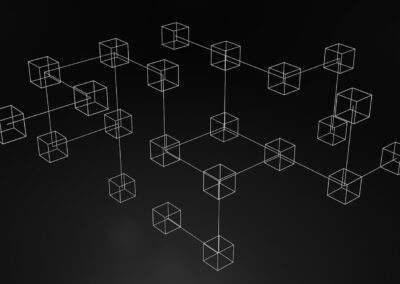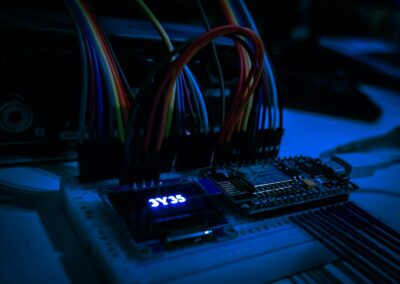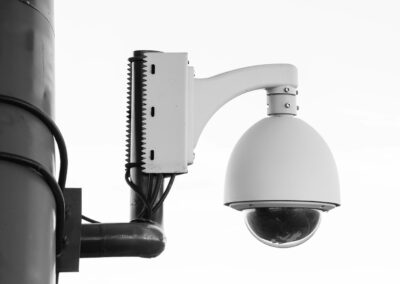Navigating the Complexities of Cyber Defense Implementation
Introduction: The Need for Advanced Cyber Defense
Adopting cutting-edge cyber defense technologies is paramount for organizations aiming to safeguard their digital assets against increasingly sophisticated threats. However, the implementation of these technologies is fraught with challenges that can impede their effectiveness and integration. Understanding and addressing these challenges is crucial for business executives, mid-level managers, and entrepreneurs, especially in rapidly developing regions such as Saudi Arabia, the UAE, Riyadh, and Dubai.
This article explores the key challenges in adopting and implementing advanced cyber defense technologies within organizations. By identifying these hurdles and proposing viable solutions, we aim to provide a comprehensive overview for leaders seeking to enhance their cybersecurity frameworks and protect their businesses from potential cyber threats.
Technological Integration and Compatibility Issues
One of the primary challenges in adopting advanced cyber defense technologies is ensuring compatibility with existing systems. Organizations often operate a mix of legacy systems and modern infrastructures, making seamless integration a complex task. This is particularly evident in regions like Saudi Arabia and the UAE, where businesses are rapidly modernizing but still rely on some outdated technologies.
Integrating new cyber defense solutions with existing systems requires significant technical expertise and resources. It often involves reconfiguring network settings, updating software, and, in some cases, replacing hardware. These processes can be time-consuming and costly, creating a barrier for organizations with limited IT budgets and resources.
Moreover, ensuring that new technologies can communicate effectively with existing systems is critical to maintaining operational continuity. Any disruption caused by integration issues can lead to vulnerabilities that cyber attackers might exploit. Therefore, a thorough assessment of existing systems and careful planning of integration strategies are essential to overcome these challenges.
Ensuring Data Privacy and Compliance
With the adoption of advanced cyber defense technologies, ensuring data privacy and regulatory compliance becomes a significant concern. Countries like Saudi Arabia and the UAE have stringent data protection laws that organizations must adhere to. Implementing new technologies that handle sensitive data requires careful consideration of these regulations to avoid legal repercussions.
Advanced cyber defense solutions often involve extensive data collection and analysis, which can raise privacy concerns among stakeholders. Organizations must implement robust data governance frameworks to manage and protect data, ensuring that all operations comply with local and international regulations. This includes setting up policies for data collection, storage, access, and sharing.
In addition, transparency with stakeholders about how their data is being used and protected is crucial to building trust. Regular audits and assessments of data handling practices can help organizations maintain compliance and address any privacy issues that arise during the implementation of new cyber defense technologies.
Cost and Resource Allocation
The cost of adopting and maintaining cutting-edge cyber defense technologies can be prohibitive for many organizations. These solutions often require significant upfront investment in hardware, software, and skilled personnel. In regions like Riyadh and Dubai, where businesses are striving for rapid growth, balancing these costs with other operational expenses can be challenging.
Resource allocation is another critical issue. Implementing advanced cyber defense technologies requires dedicated IT teams with specialized skills. Many organizations may not have the necessary expertise in-house and might need to invest in training or hiring new personnel. This not only adds to the cost but also takes time, potentially delaying the implementation process.
To address these challenges, organizations can explore cost-sharing models or partnerships with cybersecurity firms. Leveraging managed security services can also provide access to advanced technologies without the need for significant capital investment. These approaches can help businesses mitigate costs while still enhancing their cybersecurity posture.
Overcoming Resistance to Change
Adopting new technologies often meets with resistance from within the organization. Employees may be reluctant to change established workflows and learn new systems, especially if they perceive the new technologies as complex or disruptive. This resistance can hinder the successful implementation of advanced cyber defense solutions.
Effective change management strategies are essential to overcome this resistance. Engaging employees early in the process, providing comprehensive training, and clearly communicating the benefits of the new technologies can help alleviate concerns and foster a positive attitude towards change. Involving key stakeholders in the decision-making process can also ensure that the new systems meet the organization’s needs and expectations.
Executive coaching services can play a vital role in facilitating this transition. By providing guidance and support to leaders, executive coaches can help them navigate the complexities of change management and drive the successful adoption of new cyber defense technologies.
Maintaining and Updating Cyber Defense Systems
Once implemented, maintaining and updating cyber defense technologies is an ongoing challenge. Cyber threats are continually evolving, requiring constant updates and adjustments to the defense systems. Organizations need to allocate resources for continuous monitoring, threat analysis, and system updates to ensure the effectiveness of their cybersecurity measures.
Automating these processes can help alleviate some of the burdens. Automated update mechanisms and threat detection systems can reduce the need for manual intervention and ensure that the defense systems are always up-to-date. However, automation itself requires careful implementation and monitoring to avoid potential issues and ensure that it functions as intended.
Regular training and development programs for IT and cybersecurity personnel are also crucial. Keeping the team updated on the latest cyber threats and defense strategies ensures that they can effectively manage and maintain the systems. Additionally, fostering a culture of continuous improvement and innovation within the organization can drive ongoing enhancements to the cybersecurity framework.
Conclusion: Strategic Approaches to Cyber Defense
Adopting and implementing cutting-edge cyber defense technologies is essential for organizations to protect their digital assets in an increasingly complex threat landscape. While the challenges are significant, they can be overcome with strategic planning, resource allocation, and effective change management.
For businesses in Saudi Arabia, the UAE, Riyadh, and Dubai, leveraging advanced technologies can enhance cybersecurity measures and support sustainable growth. By investing in the right solutions, engaging expert services, and fostering a culture of continuous improvement, organizations can build robust cyber defenses that safeguard their operations and drive long-term success.
#CyberDefense #BusinessSecurity #ModernTechnology #Leadership #ProjectManagement #BusinessSuccess #SaudiArabia #UAE #Riyadh #Dubai























